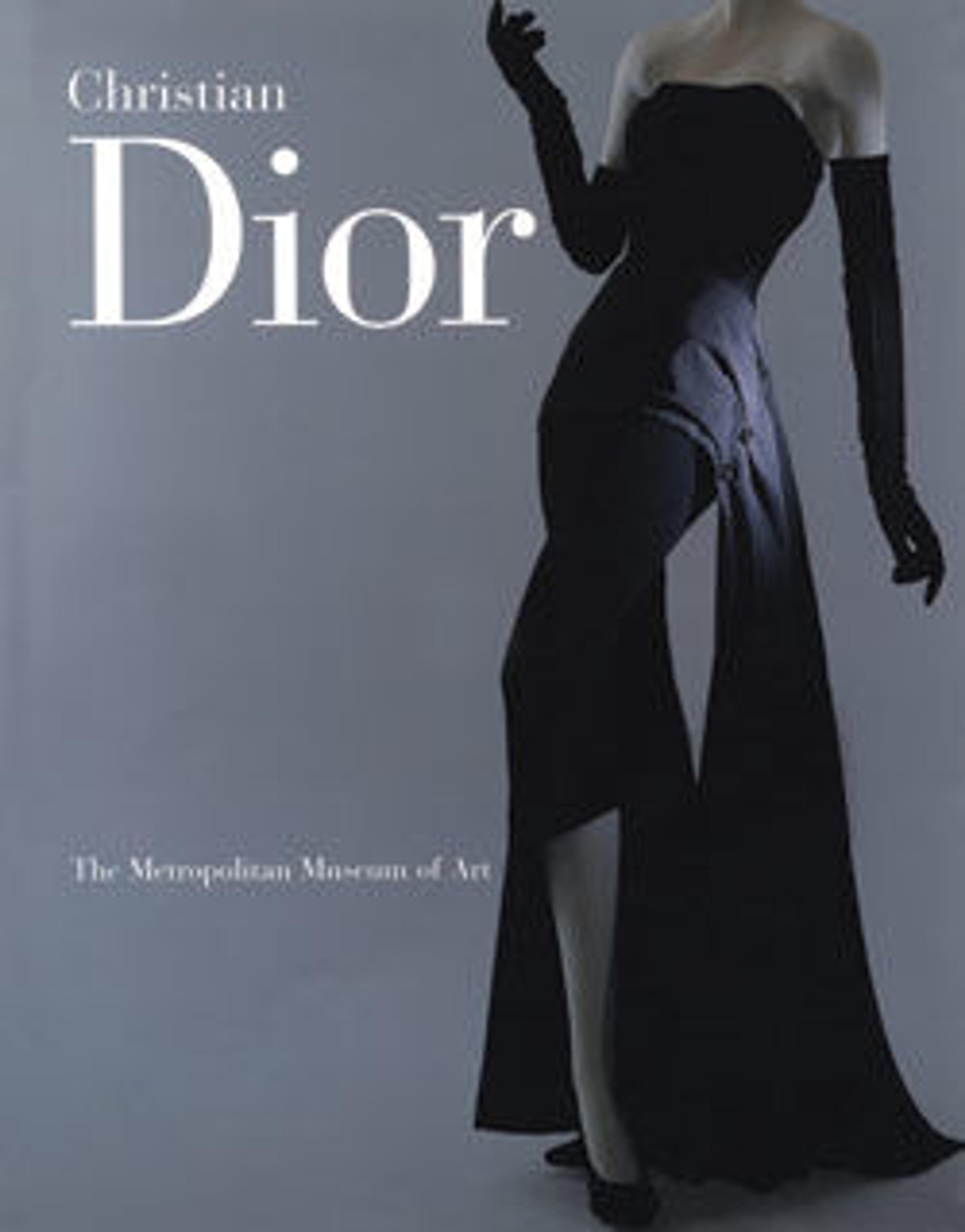"Partie Fine"
What appears to be a one-piece dress is actually a separate bodice and skirt. The bodice has a boned corselet over which the pleated fabric has been anchored in a stiffened armature with floating, barely affixed pleated panels. The collar is held away from the neck by a line of hidden wire. Roses with green leaves were placed at the left side of the bodice. The shoulders, when seen in detail, suggest the way Dior has draped rather than tailored his forms, wrapping and tacking instead of cutting and piecing. The soft plaiting at the neck and shoulders alludes to eighteenth-century fichus, small shawls that defined the wearer's décolletage with softly gathered fabric. It was in 1951 that Dior detached his subtle surfaces from the grand silhouette, his finest achievement of that year. He had always known and demonstrated, in his cocktail and evening dresses, that the skin of the garment was pliant and could be lifted away from the substructure, but in 1951 that principle became the prime focus of the collection.
Artwork Details
- Title: "Partie Fine"
- Design House: House of Dior (French, founded 1946)
- Designer: Christian Dior (French, Granville 1905–1957 Montecatini)
- Date: spring/summer 1951
- Culture: French
- Medium: (a) silk
(b) silk, nylon
(c) nylon, leather, silk - Credit Line: Gift of Mrs. Byron C. Foy, 1953
- Object Number: C.I.53.40.21a–c
- Curatorial Department: The Costume Institute
More Artwork
Research Resources
The Met provides unparalleled resources for research and welcomes an international community of students and scholars. The Met's Open Access API is where creators and researchers can connect to the The Met collection. Open Access data and public domain images are available for unrestricted commercial and noncommercial use without permission or fee.
To request images under copyright and other restrictions, please use this Image Request form.
Feedback
We continue to research and examine historical and cultural context for objects in The Met collection. If you have comments or questions about this object record, please complete and submit this form. The Museum looks forward to receiving your comments.
